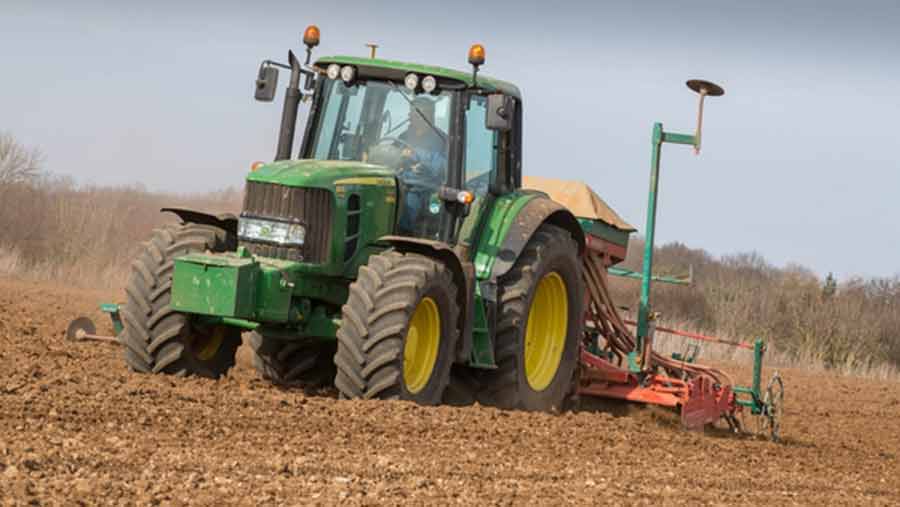Barley growers urged to go early with nitrogen on late-drilled crops
 © Tim Scrivener
© Tim Scrivener Spring barley growers need to bring forward their nitrogen applications to try and boost crops which were late drilling into poor wet seed-beds.
Backward-looking crops should be encouraged to root and tiller after a poor start to the season with early nitrogen, sulphur and trace elements all seen helping, say crop experts.
Spring barley drillings are estimated to be up 10% this season as winter barley and oilseed rape sowings fell, but a cold, wet start to the year has put the spring crop on the backfoot.
See also: Get the seed rate right for successful spring barley
Many spring barley growers split their nitrogen application between in the seed-bed or soon after and then at the 2-3 leaf stage up to first tiller appearing, and they are now being urged not to delay with this second application.
Key timing
Edward Downing, national crop nutritional technical manager at advisory group Frontier, urges growers not to hold back with this later dressing to make sure crops are not short of nitrogen.
“I would urge growers to be on the early side of that application window and go at the 2-3 leaf stage, especially with dry weather forecast,” he tells Farmers Weekly.
Sarah Kendall, crop physiologist at crop consultants Adas, agrees that the timing of this second application of nitrogen will be vital on late-drilled spring crops.
“The key will be getting as close as possible to that 2-3 leaf stage, and for late-drilled crops this timing will be crucial,” she says.
Both agree that timing is more important than the actual rate of nitrogen and they would not generally advocate pushing nitrogen rates higher.
Mr Downing also advises that growers think carefully about applying sulphur with this second application of nitrogen as he has already seen cases of sulphur deficiency in winter wheat so this could easily occur in spring barley.
“If the crop does not have enough sulphur it will struggle to utilise the nitrogen,” he says.
Dr Kendall adds that growers could consider an application of a plant growth regulator at mid-tillering which could help to promote more tillering in their crops.
Tiller survival
Leading barley breeder Limagrain says growers need to ensure all surviving tillers are given the best chance of survival with the use trace elements and fungicides.
Ron Granger, UK arable technical manager at the group which bred spring varieties like Concerto and Odyssey, says growers need to protect the crops they have at the moment.
“Growers need to keep plants as healthy as they can to ensure all possible tillers which have been produced can survive,” he says.
Ian Bingham, crop physiologist at Scotland’s Rural College, says that fungicide applications later into the season are key to retain tillers even with later-sown crops.
His work has shown that fungicides boost grain numbers per ear in spring barley and so give a significant yield response even in the absence of major disease problems.
“Even in poor spring barley crops, we have seen responses to fungicide treatment at T1 and also T2 in terms of increased grain numbers in the ear,” he says.
For those very late growers who have just drilled, Frontier’s Mr Downing suggests they consider some early water-soluble phosphate with their first nitrogen application to encourage rooting.
The AHDB Early Bird survey of planting intentions published late last year estimated spring barley drillings would be up a tenth at 727,000ha this season, largely at the expense of oilseed rape down 14% at 565,000ha and winter barley off 4% at 424,000ha.

